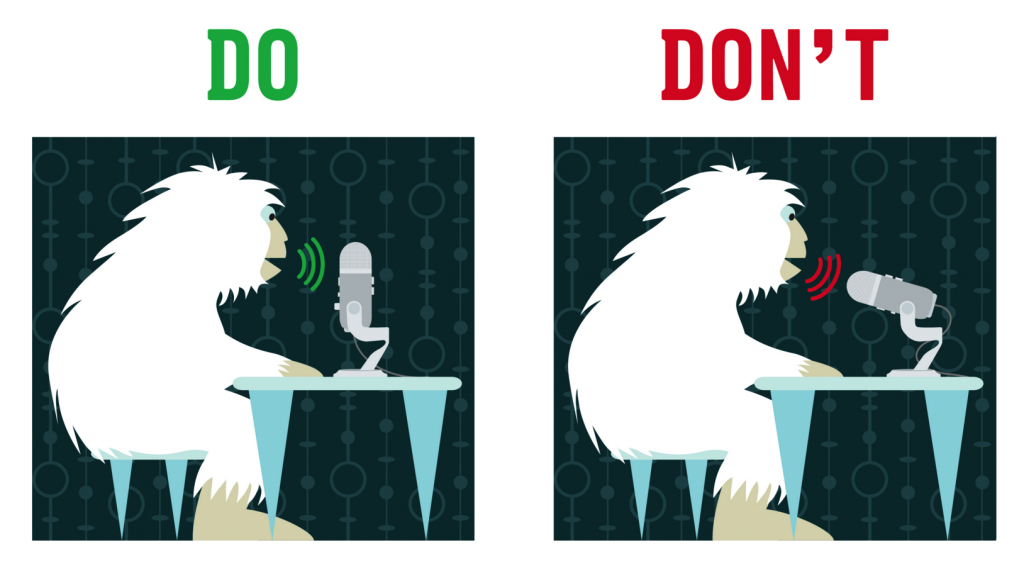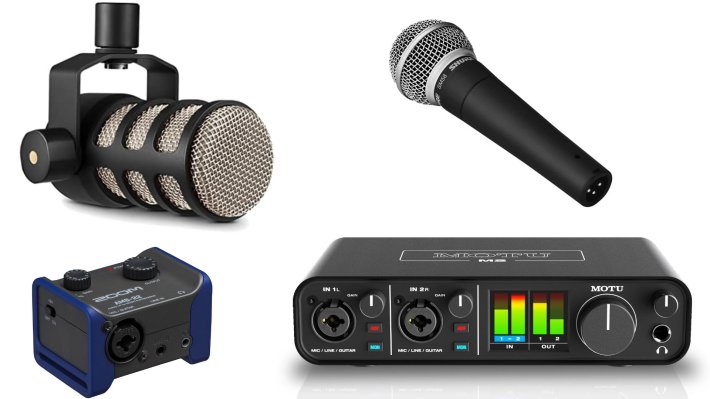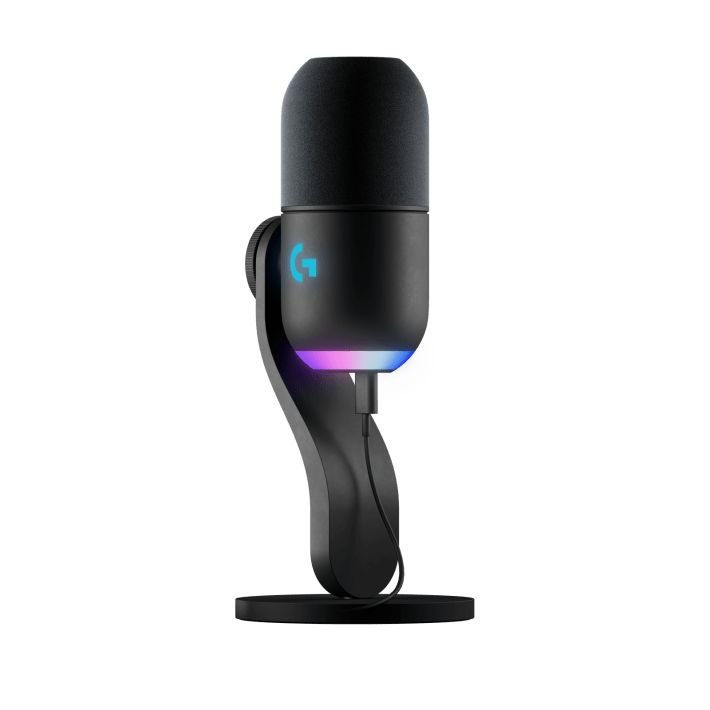Podcasters have it so good today. Back in the day, you had basically one choice for “what kind of mic should I use?” if you were a normal person, and that was the Blue Yeti mic. You may have one of these in your home. It served people decently, but we have moved on as a society. Yet I still see Blue Yetis being sold in 2024, the brand having been folded into Logitech. I have had to deal with these things for years and years, and have developed a list of things I hate about them.
1. I hate its awful little USB port

I never want to see a Mini or Micro USB port or cable for the rest of my life. After a long and tumultuous era, we have settled on which USB plugs and ports suck the least, and they’re Standard-A, Type-C, and occasionally the chunky big Standard-B ones if you have a printer or something. The port on the bottom of the Blue Yeti is a very bad Mini B port. Due to the position of the mic and the generally poor quality control of the device, that thing will constantly break or just slowly get shitty over time. If you work in media, this means you have two or three broken Blue Yetis in a box in a closet next to several old capture boxes that suffered a similar fate.
I know Blue Yetis are still like this because my coworker Riley bought one fairly recently without asking me, brought it home, and the port on it instantly died. This made me so upset that I needed to write a manifesto about this fucking microphone.
2. I hate the three little capsules inside it, the different pickup patterns, and how it is designed

One of the ways that the Blue Yeti was novel when it came out is that it has multiple capsules in it. This allows you to switch the pickup pattern (the direction the microphone is sensitive) in four different ways: omnidirectional, cardioid, bidirectional and stereo. This is a feature that exists in better mics, and while those were theoretically useful if you have multiple people talking in the same room, practically speaking cardioid (so called because it’s a heart shape) is the only one you want to use because you should not be using one Blue Yeti for multiple people unless you want your podcast producer to be mad at you. Those three internal modules are not well placed directionally, and instead of focusing on three mediocre capsules, they could have put one pretty good one in there.

The real problem with the Blue Yeti is who it was for, and how the weird design backfires on its intended audience. This is particularly painful if you have to clean up after the results. The Yeti is a mic that your coworker or someone who is not tech-savvy would use in case they had to be on a voice call or record a podcast from home. They Google “best USB mic,” buy it, and use it without looking at the instructions. Oftentimes they select the wrong pickup pattern, speak into the wrong side, or don’t realize that it’s a front firing mic instead of a top-firing one. This is a very common mistake to make given the general shape of the mic.
If you’re an audio producer or in video production, you get the files they recorded in Audacity and it sounds like the user is in a different room. It would be clear that the well-meaning user set it up incorrectly, and you would be tasked with “fixing it,” to which you would reply that “that’s not how audio works, but I’ll see what I can do.” What’s more, most people would not use a mic arm or mic stand and simply stick with the big heavy default one, but realistically that means the speaker would often be hunched over or way too far away. This also leads to the aforementioned cable flexing, which can cause the USB port to deteriorate.
If used correctly, you can get somewhat passable audio from the Blue Yeti compared to internal laptop mics, but it’s a mic whose primary audience is novices who do not know how to use a mic correctly. The weird, additional points of failure would ultimately lead to many very bad sounding podcasts and broken hardware from people trying their best, and lead to the frustration of many audio professionals trying to salvage their Buffy recap podcast.
3. There are better mics, and mic/interface combos, for the same price

For years people would go into a store or to The Wirecutter, see the Blue Yeti, and think “Well that’s the one that people recommended, so it must be good!” Times have changed, and mics have gotten way better. Though the former top pick of The Wirecutter, they no longer will recommend it and accurately describe it for what it is: middling. Tech Gear Lab, Tom’s Guide and Wired still recommend the Yeti, which is probably the most I have ever disagreed with any of those websites. Better mics exist now at that price point ($129.99 but often on sale for $99). You can also spend a bit more or get a used mic on eBay from someone who used to have a podcast but whose dreams are now broken.
The Røde’s PodMic is fantastic in both its XLR and USB variants, although the USB version is not at the same price point. Audio Technica has some USB mics that, while not the best, are far better in any head-on comparison. People seem to like the inexpensive Samson Q2U which also has both USB and XLR connectivity. The Elgato Wave:3 wowed our now passed coworker Mike Fahey, particularly for its intuitive Wave Link software. On top of that, the money you spend on a bad USB mic that could easily break can be better spent on a good audio interface and a cheap but durable dynamic mic. If you wanna get serious (which some people might not!), an interface offers more flexibility and better sound.
If you are digging into interfaces, Julian Krause is hands-down the best reviewer on YouTube for up-to-date reviews. Personally I loved the Motu M2 when I used it. It has a beautiful screen, a solid body, a loopback, killer latency, beautiful sounding preamps, and it just works. I have heard that the 4th generation Focusrite interfaces have gotten much better than their predecessors, which is good because I severely disliked the Gen 1 and 2 Focusrites, which I found to be buggy with weak preamps that would require additional hardware (the common recommendation for ages was “get a Focusrite and a Cloudlifter,” which I never agreed with). Topping's E2x2 interface is apparently excellent. Zoom’s AMS interfaces are perfectly fine, teensy and about $80 bucks for the solo if you need something small and aren’t picky about preamp noise. In fact, the audible difference between a lot of interfaces is getting smaller and smaller, and you can do well with some fairly cheap ones, even ones that cost $50.
In addition to USB mics, there are also countless cheap dynamic microphones like the Shure SM57s and SM58s in circulation (to say nothing of clones). Those two have been around since the 1960s. You have definitely seen one on stage, and they will probably still work after being run over by a big rig. A lot of streamers get very fancy with dynamic mics (the SM7B and Electrovoice RE20 are gold standards, but I am partial to the Heil PR-40), but most people won’t have to go over $99 with an interface. Beyond a certain point with audio, it’s diminishing returns for most people.
Though I’m partial to dynamic mics for their proximity, condensers have their place for people who want to turn their home into a full audio studio. There are tons of them and they can get increasingly absurd in price, although there is also a very robust community of people who make DIY mic clones for a fraction of the price, going so far as to source and even make reproductions of Neumann microphone capsules themselves. On top of that, I have also heard some people on forums as well as multiple Youtubers rave about the $50-$75 Bai Fei Lei C414/Proar C414 condenser mic. It is visually a clone of the AKG C414, but a very different mic. I have ordered one from Alibaba to try it out, but I can’t personally attest to its quality or recommend it...yet.
4. Blue (used to) mean something
What bugs me the most is that as a company, Blue had a rich history. Before it got bought by Logitech for $117 million dollars and then liquified into a slurry to feed the Logitech For Creators sub brand, Blue had some legendary microphones. The Kiwi, The Bluebird, the Dragonfly and the Blueberry were well loved by a lot of people. The newer Ember and the Baby Bottle SL were pretty solid, dedicated XLR mics. Some versions of their newer XLR mics currently still exist on web stores at a huge discount, but I cannot find them on Logitech’s site since the brand was sunset.
Long ago, Blue’s mics were made in Latvia (Blue stands for Baltic Latvian Universal Electronics) before eventually being outsourced to China. The creator of the Blueberry would go on to work with a company called Violet, and then form a company called JZ Microphones that still makes mics in Latvia to this day. I have not tried them because they retail for at least a thousand dollars, but Gearspace users and Sound On Sound seem fond of them.

After years of being a well-respected microphone company, Blue would strike it big with the comically cheap Snowball and the Yeti. They would create several variants of the Yeti (Yeti Pro,Yeti X, Yeti Nano). Of them, the Pro with its durable XLR input was the most defensible, but at that point you might as well just get a better microphone.
At this point “Blue” doesn’t exist; it’s a part of Logitech, a company whose general philosophy and choices I just don’t like. From adding an AI button to their mice, to idly speculating about a subscription based “Forever Mouse,” Logitech represents a garish and weirdly proprietary strain of hardware I’ve come to despise. Say what you will about the Yeti, a mic that I hate but will begrudgingly admit was an important milestone in home audio, but it didn’t look like LED streamer slop. Look at how they massacred my boy:

To Logitech’s credit, the Yeti GX does attempt to solve many of the issues I had with its predecessor. It looks taller, has a single supercardioid Dynamic capsule, is top-firing and has USB-C now. Those changes are too little, too late, and based on Podcastage’s review of it I am not a fan of how it sounds. But even if the newer Yeti was a great mic, I would not recommend paying $149.99 for something that looks like that. Blue is dead, there is an ocean of better interfaces and mics to choose from, and most of them won’t break the second you take them out of the package.


